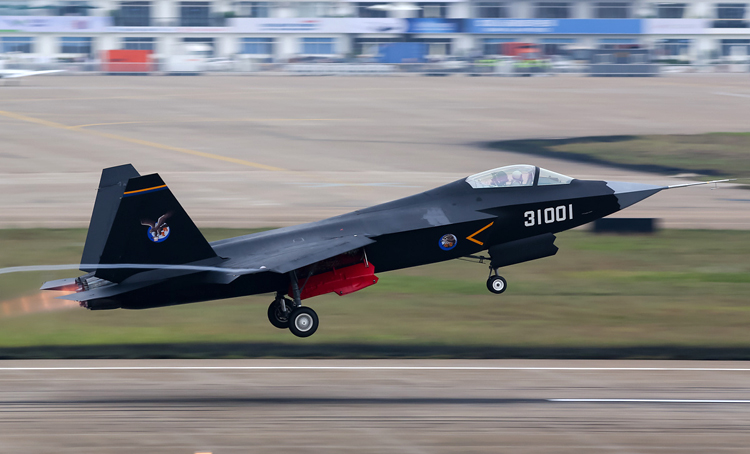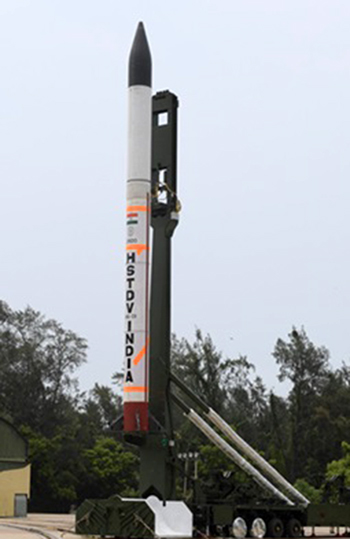INDIAN ARMED FORCES CHIEFS ON OUR RELENTLESS AND FOCUSED PUBLISHING EFFORTS

The insightful articles, inspiring narrations and analytical perspectives presented by the Editorial Team, establish an alluring connect with the reader. My compliments and best wishes to SP Guide Publications.

"Over the past 60 years, the growth of SP Guide Publications has mirrored the rising stature of Indian Navy. Its well-researched and informative magazines on Defence and Aerospace sector have served to shape an educated opinion of our military personnel, policy makers and the public alike. I wish SP's Publication team continued success, fair winds and following seas in all future endeavour!"

Since, its inception in 1964, SP Guide Publications has consistently demonstrated commitment to high-quality journalism in the aerospace and defence sectors, earning a well-deserved reputation as Asia's largest media house in this domain. I wish SP Guide Publications continued success in its pursuit of excellence.
Hypersonic and Stealth Aircraft
Russia and China lead in hypersonic weapon development, trailed by the US. India, France, Australia and Japan too are developing these technologies.
 |
The Author is Former Director General of Information Systems and A Special Forces Veteran, Indian Army |

Two recent news items herald technological advancements in future weapon platforms. Firstly, it is Russia developing its first single-engine, low-observable hypersonic light tactical fighter aircraft by Sukhoi aircraft maker which is part of the United Aircraft Corporation of Russia's ROSTEC. ROSTEC CEO Sergei Chemezov told reporters in December 2020 that the company was working on the concept of an advanced single-engine light-and medium-class piloted and unmanned combat plane. The company has said, "Work is underway to develop a combat aviation system of the future in its light and medium classes. Under the design, this may be a universal platform in the manned and unmanned versions. The company is working on the concept and the operational requirements for such a platform. We are doing this on our own initiative so far, without (federal) budget funds."
According to a source, this single-engine light fighter aircraft will have - take-off weight of up to 18 tonnes; maximum speed Mach 2; super-maneuverability and improved take-off and landing performance because of a thrust vector control engine, and; thrust-to-weight ratio above 1. Hypersonic flight is through the atmosphere below about 90 km at speeds ranging between Mach 5-10, a speed where dissociation of air begins to become significant and high heat loads exist.
Russia is developing its first single-engine, low-observable hypersonic light tactical fighter aircraft on the concept of an advanced single-engine light-and medium-class piloted and unmanned combat plane

According to a July 2019 media report, Russia and China lead in hypersonic weapon development, trailed by the US, which is being addressed in a joint program of the US Department of Defence (DoD). Two main types of hypersonic weapons are hypersonic cruise missiles and hypersonic glide vehicles. Hypersonic cruise missiles powered by scramjet are restricted to below 1,00,000 feet whereas hypersonic glide vehicles can travel higher. India, France, Australia and Japan too are developing these technologies.
On August 6, 2018, China announced that it successfully tested its first cutting-edge hypersonic aircraft which could carry nuclear warheads and penetrate any current generation anti-missile defence systems. The Xingkong-2 or Starry Sky-2 was launched in a target range located in Northwest China. Launched in a rocket, China's waverider was released in the air after about 10 minutes. It flew independently, made large-angle turning maneuvers and landed in the targeted area as planned. Waverider is a flight vehicle that flies in the atmosphere and uses shockwaves generated by its own hypersonic flight with the air to glide at high speed. The US and Russia have been carrying out similar experiments.
On June 13, 2019, India conducted the maiden launch of a new hypersonic technology demonstrator vehicle (HSTDV) that will have futuristic applications for next generation missiles and aerial systems. The vehicle was test launched using the Agni 1 missile platform that was to take it up to a predetermined altitude where scramjet technology at speeds in excess of Mach 6 while using atmospheric oxygen as oxidizer to validate separation of the platform and a short flight at high altitude. But while the missile on which the platform was mounted successfully took off from the range, the test could not be completed to demonstrate the vehicle at hypersonic speed as the Agni 1 did not reach the desired altitude for the test. Further tests will be required to validate the HSTDV that was to demonstrate a short duration flight.

The second recent news item is Chinese media announcing that China is working on a stealth helicopter that will be difficult to detect by radars and infrared (IR) sensors. The model of the aircraft was on display at the Exhibition of the Research and Development Institute of the Helicopter Aviation Industry Corporation of China (AVIC) in Jingdezhen, East China's Jiangxi Province and was inspected by Liu Qi, communist party chief of Jiangxi on May 19, 2021.
China is developing a stealth helicopter that analysts said is difficult to detect on radar, IR sensors and human sight and hearing
Apparently China is developing a stealth helicopter that analysts said is difficult to detect on radar, IR sensors and human sight and hearing. According to a Chinese aviation expert, the model (variant of China's Z-20 helicopter) displayed many stealth characteristics, including a radar cross-section reducing aerodynamic design that could make it difficult to detect on radar systems, designs in its rotors that aim to reduce noise and make the enemies only hear it at close range when flying at low-altitude, upward-facing exhausts spread out on the back of the tail boom, and low-observable paint. Military observers noted that the model likely represents a new type of helicopter that has stealth features in its airframe, rotor and exhaust designs. It could be a stealthy adaptation of the American Black Hawk medium-lift utility helicopter.

The US military had used customised versions of its Black Hawk helicopters that had features to reduce their radar and IR signatures for the raid to kill Osama Bin Laden in Abottabad, Pakistan, on May 2, 2011. One of these Black Hawks crashed in the raid. The US military destroyed the wreckage of the crashed helicopter but not fully. Soon after reports emerged that Pakistan allowed experts from China to examine the wreckage of the crashed stealth Black Hawk and that Chinese officials were allowed to take photographs and samples of the materials as well as tail of the crashed stealth Black Hawk, which included extensive use of composite material to reduce noise, weight and radar signature. Being master copy cats, China is developing a similar stealth helicopter.
China is also developing the FC-31 stealth fighter for its navy's aircraft carriers
It may be recalled that in 2010, then Pakistani Prime Minister Nawaz Sharif claimed that Pakistan had reverse-engineered the Tomahawk missile that malfunctioned during missile attack on Osama Bin Laden in 1998. This was a blatant lie. Bin Laden could evade the missile attack because he per chance switched off his satellite radio last minute and moved away. Two of the unexploded Tomahawk cruise missiles fell inside Pakistan, which Pakistan permitted the Chinese to take to China for reverse engineering and developing the Chinese version.
China is also developing the FC-31 stealth fighter for its navy's aircraft carriers. The FC-31 is a medium-sized fighter whose airframe complies with the new norms of stealthy aircraft design; aligned angles, mix of sharp chines, blended surfaces and sawtooth edges to panels. Three prototypes have flown since 2013 with the third in 2020, and it appears closer to production.





